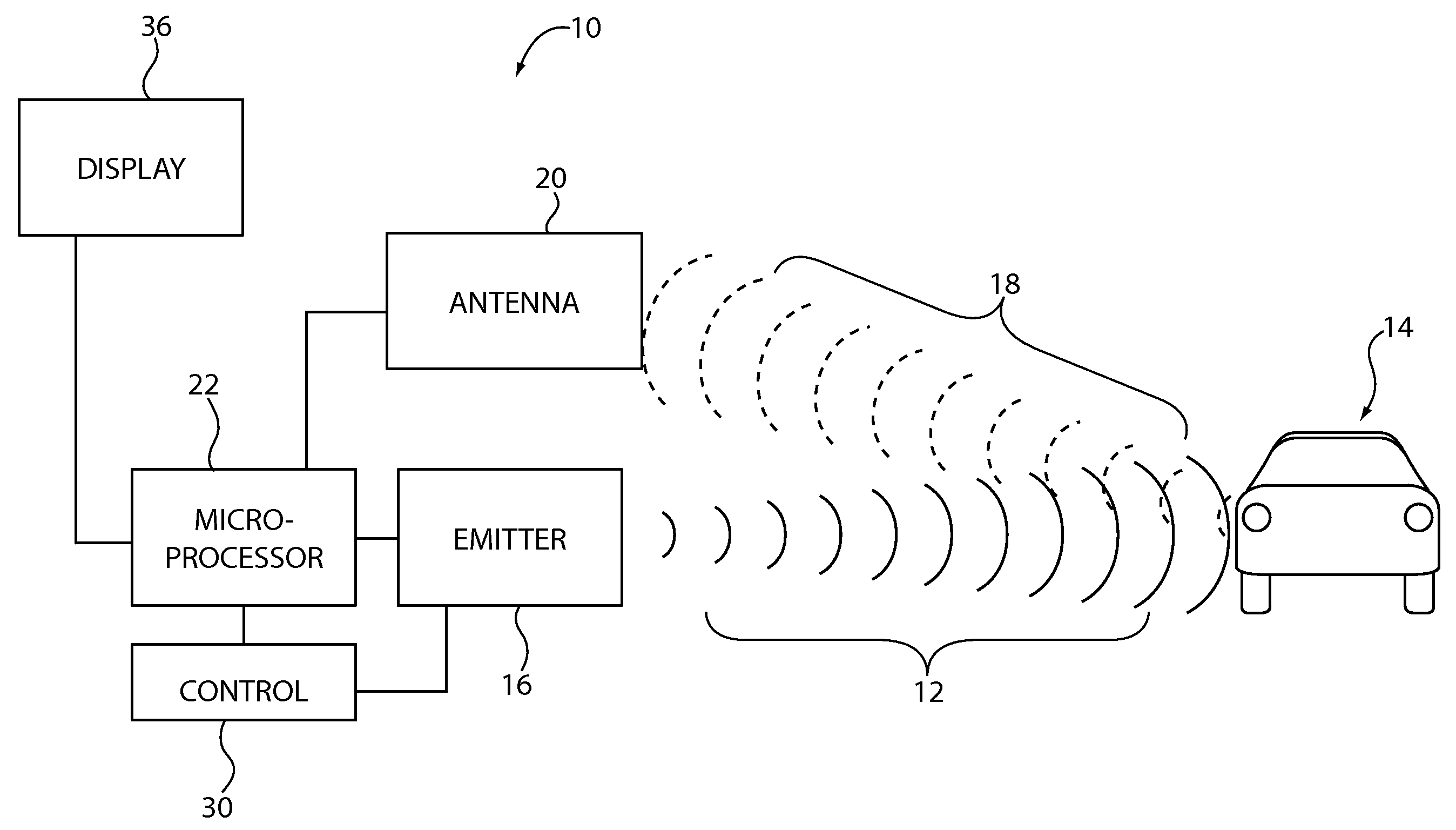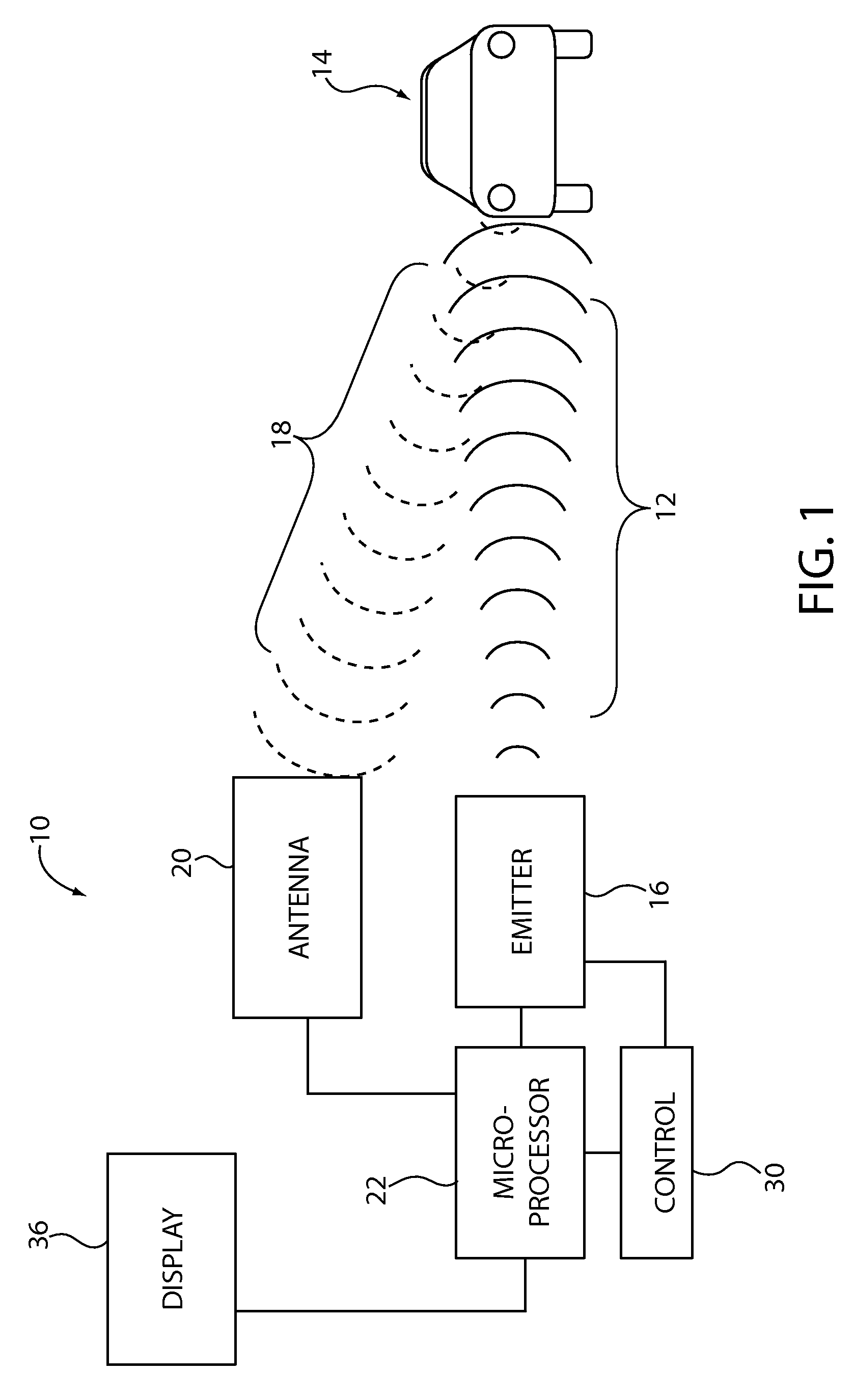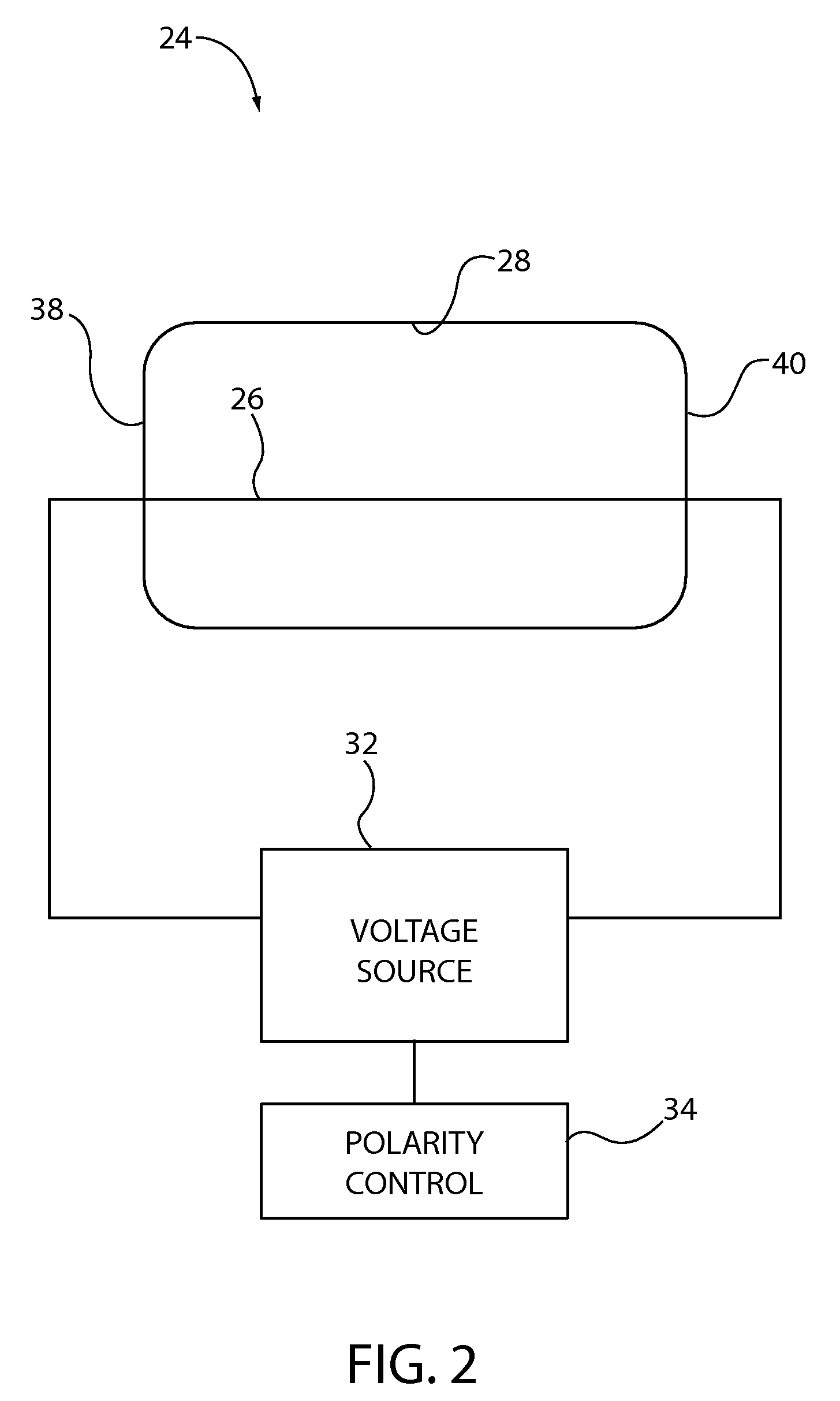Orbitron based stand-off explosives detection
a stand-off explosive and orbitron technology, applied in the field of detection of substances, can solve the problems of large size of current devices, high input requirements, and inability to carry around, and achieve the effect of achieving the function of a device large and not easily carried around
- Summary
- Abstract
- Description
- Claims
- Application Information
AI Technical Summary
Benefits of technology
Problems solved by technology
Method used
Image
Examples
Embodiment Construction
[0019]FIG. 1 of the drawings shows a detector 10 for identifying substances (not shown) at stand-off distances. In the example of FIG. 1, the detector 10, which operates by bombardment with radiant energy and subsequent analysis of returned energy, is seen to emit radiant energy, represented as a beam 12, towards an automobile 14 which is to be scrutinized to determine whether the automobile 14 is carrying any substances which are the subject of identification. Typically, such substances are related to national security and potential crime, such as explosives and narcotics, but may also comprise other substances of interest.
[0020]The detector 10 may comprise an emitter 16 of radiant energy in the microwave and terahertz wavelength ranges. For the purposes of this disclosure, the microwave range may be regarded as frequencies between 0.1 and 100 gigahertz (GHz), with the terahertz range being from 100 GHZ up to 10 THz. It should be made clear that there is no true formal boundary bet...
PUM
 Login to view more
Login to view more Abstract
Description
Claims
Application Information
 Login to view more
Login to view more - R&D Engineer
- R&D Manager
- IP Professional
- Industry Leading Data Capabilities
- Powerful AI technology
- Patent DNA Extraction
Browse by: Latest US Patents, China's latest patents, Technical Efficacy Thesaurus, Application Domain, Technology Topic.
© 2024 PatSnap. All rights reserved.Legal|Privacy policy|Modern Slavery Act Transparency Statement|Sitemap



